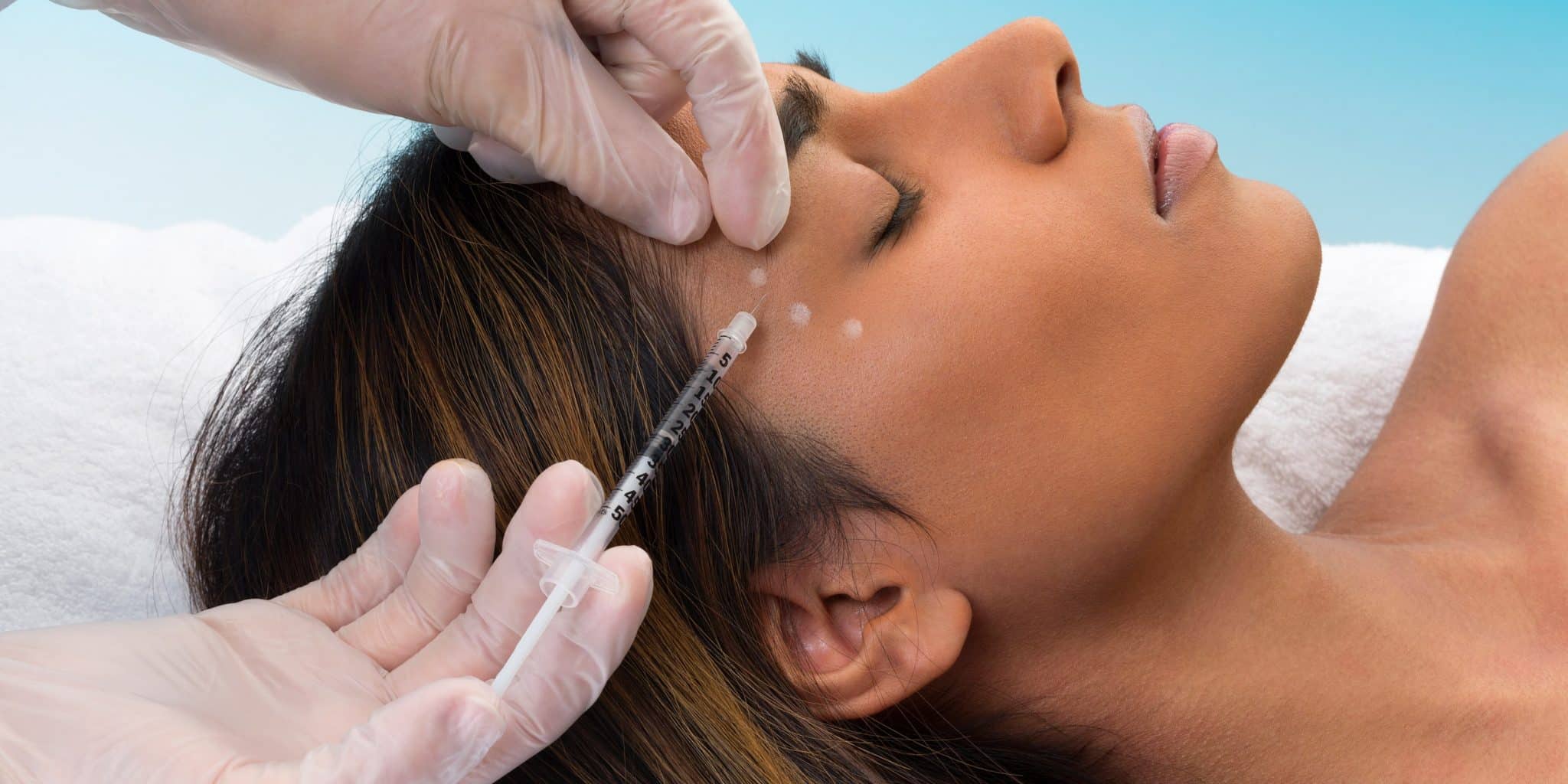What is Botox?
The term Botox is an amalgamation of botulinum toxin A, a temporary muscle paralyzer. The toxin is produced by the microbe that causes botulism.
As most people know, Botox is injected into the face for cosmetic purposes to help reduce the appearance of fine lines and wrinkles or to fill out areas of the face where the skin has become saggy or deflated.
However, Botox is said to have lesser-known uses such as preventing excessive sweating, migraines, and muscle spasms, and in recent years, studies have shown that Botox may even help with depression in some people.
The treatment is becoming a popular alternative to antidepressant medications, which can have severe side effects for some people. Most of the time, people have to go through several rounds of different medications to determine which one works best for them.
Traditional Uses For Botox
Cosmetic
From a cosmetic standpoint, Botox is used to plump out facial expression lines that have carved themselves out in the face over time. Botox is commonly used to reduce expression lines around the mouth, eyes, forehead, and neck.
Medical Treatment
Botox can block specific chemical signals in the body that can cause muscle contractions. For this reason, it can be used to treat muscle imbalances or chronic pain from muscle tension. Botox may help relieve symptoms of:
- Cervical Dystonia
- Lazy Eye
- Muscle Contractures
- Hyperhidrosis
- Chronic Migraine
- Bladder Dysfunction
- Eye Twitching
Procedure
First, your doctor will sanitize your face with alcohol, followed by a numbing agent. They will then inject Botox into the area needing treatment. The result is a temporary paralysis of the muscles in that area. This is why many people who receive Botox are unable to frown. Patients may feel slight pain or discomfort lasting around five seconds during the injection.
After the procedure, you can return to your normal activities almost immediately. Still, you’ll want to avoid any actions that could irritate the injection site, like laying down or contact sports, for a few hours after.
Botox Effect on Mental Health
“Three prospective studies have now shown that onabotulinumtoxinA (BTA) injection to the corrugator and procerus forehead muscles can improve the symptoms of major depression.” – Journal of the American Academy of Dermatology
The idea of using Botox to treat depression is relatively new, only dating back to a 2006 trial involving a mere ten patients. Each patient received a Botox injection in frown lines located between the eyes. After two months, 9 of the 10 patients said they no longer had depression symptoms.
Since then, several studies have spring-boarded off of the 2006 trial. Each one came up with the same result: patients who received Botox injections reported improved depression symptoms in much higher percentages than patients who received a placebo.
Other studies report that Botox can be helpful when used alongside antidepressant medication. One study found that Botox’s antidepressant effects can last up to 24 weeks, twice the length of Botox’s cosmetic effects.
Why does Botox Help with Depression?
The jury is still out on why Botox seems to help with depression. Initially, researchers believed Botox’s antidepressant effects were directly linked to improved appearance. However, further studies have ruled out this hypothesis.
Another theory posits that the improved mood stems from a “facial feedback” mechanism. Facial expressions send subconscious signals to the brain. When people express emotions like fear, anger, or sadness facially, specific muscles contract, this is said to happen more in people with depression. Temporarily paralyzing these facial muscles with Botox may be the result of improved mood.
Risks and Side Effects
Botox is a low-risk procedure, but you should make sure to have it done by an experienced professional. Possible side effects of Botox include:
- Pain, swelling, or bruising around the injection site
- Headache or flu-like symptoms
- Sagging eyelids or crooked eyebrows
- A crooked smile, lessened mouth mobility, drooling
- Dry eyes or excessive tearing
In rare cases, the toxin can spread to other areas of the body, like the limbs or bladder. Call your doctor immediately if you experience any of the following symptoms after Botox injection:
- Muscle weakness
- Disturbed Vision
- Slurred speech and trouble swallowing
- Breathing difficulties
- Loss of bladder control
An Important Note
Research into the antidepressant effects of Botox is still ongoing. Before using Botox for depression, consult your doctor. Botox is not approved by the U.S. Food and Drug Administration for use as an antidepressant, so insurance plans likely will not cover it.
The consensus among doctors is that people who are pregnant or breastfeeding should not receive Botox. Those with a history of severe allergy, especially cow’s milk protein, should proceed with caution. If you are interested in learning more about Botox, Here are 12 things you need to know before getting Botox and Fillers.




